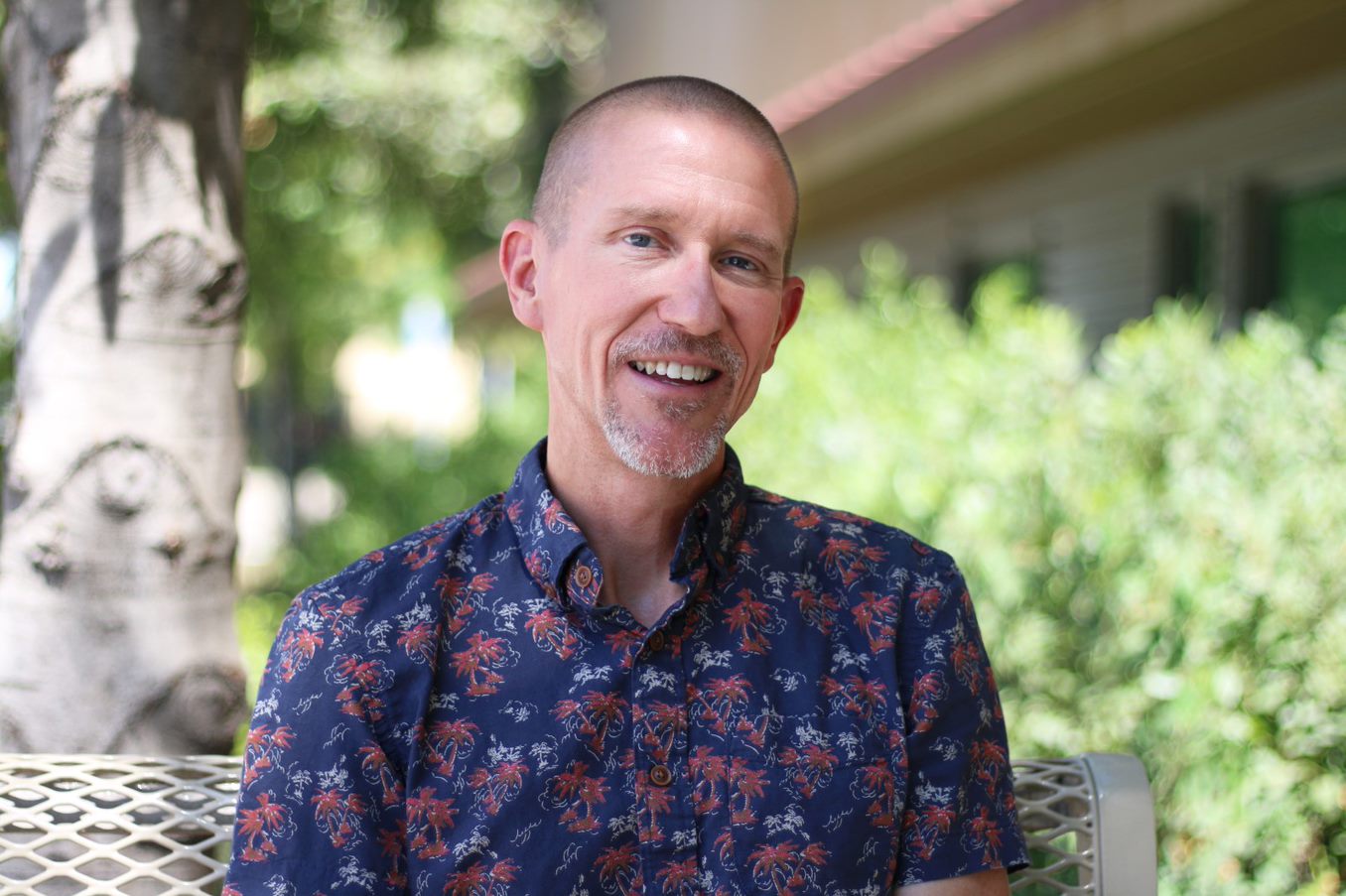Instructor Involves Students in Regional Air Quality Improvement Effort
 Students are learning about what it takes to breathe easier at SBVC. In recent years,
the campus has become more active with South Coast Air Quality Management District
(SCAQMD) and are on track to address the academic side of an environmental justice
issue. Professor Todd Heibel said last year's installation of air monitoring sensors
around campus now allows students to not only participate in creating social change,
but understand the close connections of air quality data, geography, environmental
studies and sciences. Dr. Heibel began looking more deeply into local air quality
impact about 15 years ago following class visits from Todd Warden, a representative
from SCAQMD. Last year, the agency funded the air monitoring sensors, which were
placed on several campus buildings. He said it also provides a unique opportunity
for students to access technology across several disciplines.
Students are learning about what it takes to breathe easier at SBVC. In recent years,
the campus has become more active with South Coast Air Quality Management District
(SCAQMD) and are on track to address the academic side of an environmental justice
issue. Professor Todd Heibel said last year's installation of air monitoring sensors
around campus now allows students to not only participate in creating social change,
but understand the close connections of air quality data, geography, environmental
studies and sciences. Dr. Heibel began looking more deeply into local air quality
impact about 15 years ago following class visits from Todd Warden, a representative
from SCAQMD. Last year, the agency funded the air monitoring sensors, which were
placed on several campus buildings. He said it also provides a unique opportunity
for students to access technology across several disciplines.
Citizen scientists will also have a role to play in assisting SCAQMD. Through Geographic
Information System (GIS), students will learn to assess air quality data, and analyze
pollutants. The student-led effort will also collect data, partner with biology students,
as well as any other students who want to participate.
“We're also going to have some of our geography students, physical geography, weather,
and climate students, incorporate weather station data,” Prof. Heibel said. “We do
really want to be as interdisciplinary as possible.”
Biology faculty are taking an interest in environmental studies. Eventually, Heibel
said the campus is looking to start an environmental studies program, which could
be a companion piece to the programming.
Heibel has attended quarterly meetings with nonprofits, industry, and other community
colleges, with a focus on environmental justice and partnerships. He feels the data
can provide the foundation needed to lead to other academic enhancements and policy
change. Through his classes, SCAQMD presentations engaged students on the agency's
role in air quality, community partnerships, and the need to track bad air in the
Inland area.
He said the GIS maps presented by Warden were very compelling. Students learned that
the basin exceeds federal limits for particulate and ozone pollution numerous days
per year, and the epicenter is here in the Inland Empire, particularly on the SBVC
campus. “We can see what the wind speed was, the direction, and temperature pressure,
etc., on the days when the ozone, particulate matter was absolutely terrible. And,
was it within legal limits?”
Last year, SCAQMD sponsored a workshop in partnership with the SBVC campus that sparked
great community dialogue, he said. In attendance were students, faculty, staff, administrators,
and strong participation from local advocates, including the Sierra Club and CCAEJ
founder and former director, Penny Newman. Through SCAQMD, community meetings are
regularly held in the area, along with local activist Mary Valdemar, an SBVC representative,
who led discussions in the fight for clean air.
Exposure to the data may also lead students into adjacent lucrative fields of the
future, to renewable energy, with several related components. The career potential
is huge, including broad access to STEM, as well as other fields, such as the SBVC
automotive program, which Heibel said is heavily invested in renewable energy technologies.
“It's wonderful that we have pioneers on campus that say we can bring non-diesel power
alternative fuels to the logistics industry. We're not enemies of the logistics industry,
but can we do this in a cleaner, smarter way?”
The goal is to fully integrate the air sensors into the college curriculum, and get
students to the place of data collecting, analyzing, mapping, publishing the data,
and developing communication skills. The other benefit is they will gain valuable
experience presenting the data at professional conferences.
Most of all, students are learning to be better citizens. He said the process is by
students, and for students – and by extension – it's by the community, and for the
community. “What can we do to mitigate it locally? We're in the midst of this grand
experiment of climate change. Part and parcel of that, our air quality is unacceptable,”
he said.

